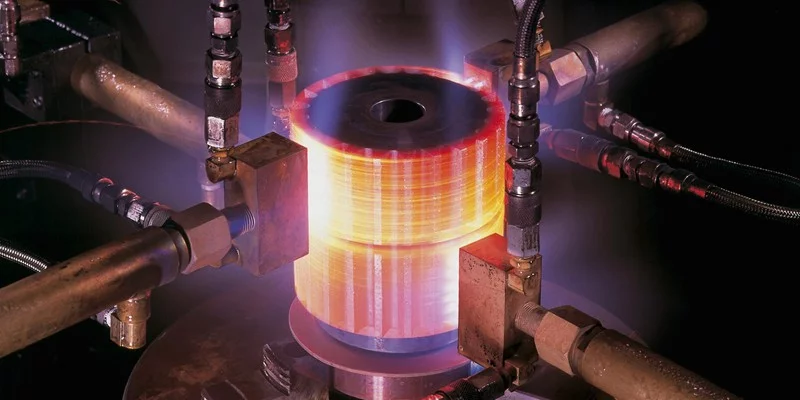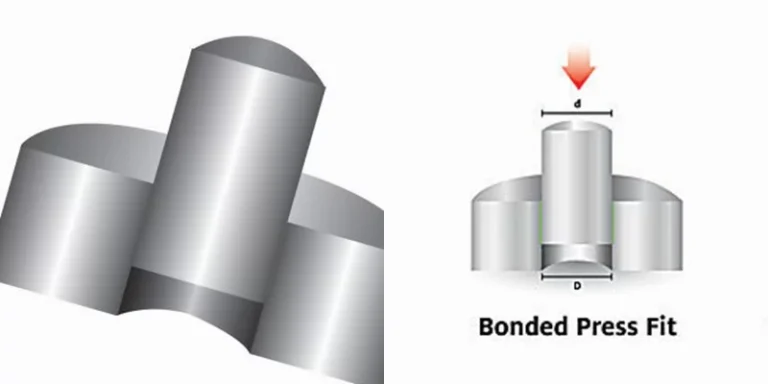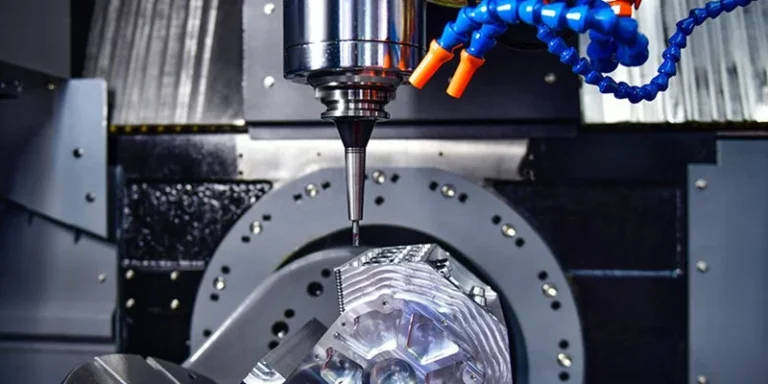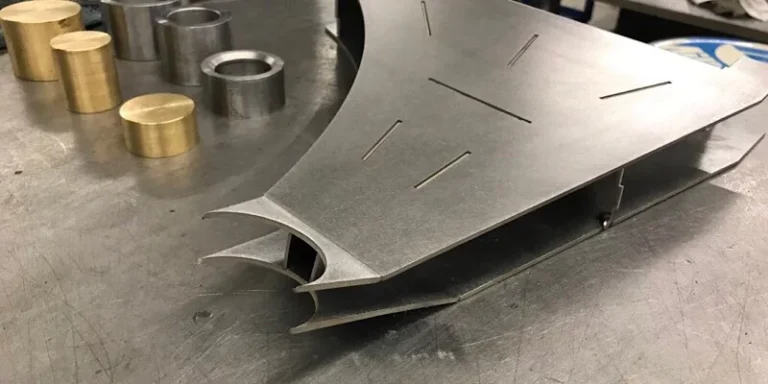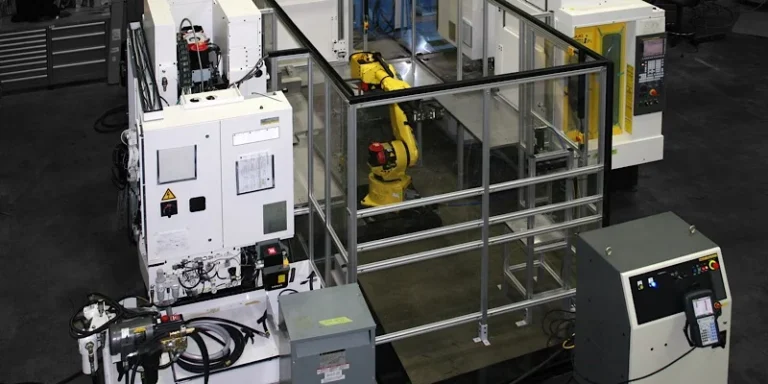Heat treatment is a controlled process used to alter the physical, and sometimes chemical, properties of a material through heating and cooling cycles. Annealing is one specific example within this broader field, which is crucial in metal production.
Metals, particularly after processes like cold working during fabrication, often develop internal stresses and non-uniform microstructures. These characteristics can make the material hard, difficult to cut, and anisotropic. Heat treatments, such as annealing, are therefore essential to eliminate these undesirable properties.
To perform heat treatment, engineers subject the material to a sequence of heating and cooling operations for specific durations. These processes typically improve material properties like ductility, strength, and hardness.
What is Annealing?
Annealing is a heat treatment technique characterized by heating a metal to a precise temperature, maintaining it there for a designated time, and then allowing it to cool down slowly to room temperature. This process results in a softer metal with reduced internal stresses. Furthermore, it increases the metal’s ductility and workability, enhancing its machinability.
Typically, annealing prepares the metal for subsequent manufacturing steps, ensuring it meets the necessary performance criteria.

How the Annealing Process Works
Compared to some other heat treatments, the annealing process is relatively straightforward. It consists of three primary stages, each demanding careful process control and engineering expertise. Let’s examine these stages, starting with the first.
1. Recovery
The initial stage of annealing is known as ‘Recovery’. During this step, the material is placed inside a furnace and heated until it reaches its recrystallization temperature. At this specific temperature, the crystal lattice structure of the metal begins to repair itself as linear defects, known as dislocations, are eliminated. Consequently, the internal stresses within the metal are relieved, and it becomes significantly softer.
To ensure sufficient time for these dislocations to resolve, the material is typically maintained at this elevated temperature for a predetermined duration, which can sometimes extend up to several hours.

2. Recrystallization
The second stage, ‘Recrystallization’, is central to achieving the desired metallurgical changes through annealing. In this phase, the furnace heats the metal above its recrystallization temperature but below its melting point.
At this elevated temperature, new, strain-free grain structures begin to form within the metal without it actually melting. These new grains nucleate and expand, gradually replacing the original deformed grains which were responsible for the internal stress and stored energy in the lattice. Because these new grains have fewer dislocations, they result in a more uniform and isotropic structure. This leads to improved ductility and reduced hardness, creating a more homogenous material.
3. Grain Growth
The final stage is ‘Grain Growth’. If the metal is held at the high temperature after recrystallization is complete, the newly formed grains will continue to grow larger. Larger grains can increase the material’s toughness, as they can absorb more energy before fracturing. However, this comes at the cost of reduced strength, because larger grains mean fewer grain boundaries, which act as barriers to dislocation movement (strain).
Careful control during this stage is crucial to strike the right balance between toughness and strength. Deviating from established heat treatment parameters can lead to costly rework.
Once the grain growth stage is complete, the furnace is switched off, and the metal is left inside to cool slowly back to room temperature. This slow cooling prevents abrupt thermal changes that could reintroduce stresses.
In essence, the three stages of annealing manipulate the material’s thermal state to:
- Eliminate existing dislocations.
- Generate new, strain-free grains.
- Control the size of these new grains.
Why is Annealing Performed?
Annealing is carried out for several key reasons, primarily focused on enhancing material properties, improving its workability, and increasing its overall functional value for subsequent applications.
Engineers typically employ various mechanical testing methods to assess material properties and establish the necessity and specific parameters for annealing.r annealing processes.

Increase Ductility
Ductility refers to a material’s ability to deform under stress without breaking. While reduced deformation might seem desirable in a final product, increasing ductility is often a primary objective of annealing. This is because higher ductility significantly improves a metal’s processability. Ductile metals, unlike brittle ones, can be easily bent, rolled, or drawn into various shapes with a lower risk of cracking or failure during these operations.
Reduce Hardness
Lowering a material’s hardness is a fundamental outcome of annealing. This might seem counterintuitive, as hardness is often considered a positive attribute. However, very hard metals pose challenges in manufacturing as they are difficult to machine and shape. Processing hard materials requires more time, necessitates specialized and expensive tooling, and leads to faster tool wear, consuming more resources compared to softer materials. Annealing makes the metal easier to work with.
Relieve Internal Stresses
Manufacturing processes such as casting, welding, and machining often introduce internal stresses within metals. These residual stresses can lead to unexpected failures like cracking or warping over time or during subsequent processing. Annealing effectively relieves these internal stresses by allowing the microstructure to relax and reorganize. It eliminates distortions within the crystal lattice, redistributes grains, and minimizes stress concentration points, resulting in a more stable and uniform material less prone to failure.
Enhance Toughness
Toughness describes a material’s capacity to absorb energy and deform plastically before fracturing. Annealing refines the grain structure, which typically enhances toughness. By promoting a more uniform grain size distribution and reducing microstructural defects like impurities that can initiate cracks, annealing improves the material’s ability to withstand impacts and resist fracture.
Improve Microstructural Homogeneity
Metals possess intricate microstructures that can be negatively affected by impurities and dislocations (defects in the crystal lattice). These irregularities can lead to reduced ductility, anisotropic behavior (properties varying with direction), and localized stress concentrations. The controlled heating and cooling cycle of annealing facilitates the formation of new, more uniform grains and allows for the reduction of these irregularities. This results in a more homogenous microstructure, leading to more consistent (isotropic) properties and overall improved material performance.

Types of Annealing
Annealing is a highly adaptable process with several variations. While these different types involve distinct processing steps, they all share the common objective of enhancing the metal’s properties. The specific annealing process and temperature chosen often depend on the carbon content of the steel alloy, as indicated in related diagrams (like the figure mentioned).
Let’s explore some common types of annealing processes:
Full Annealing
Often used interchangeably with the general term “annealing” described earlier, “full annealing” is sometimes categorized as a specific subtype. In this process, the metal is heated sufficiently to permit the rearrangement of dislocations and elimination of inconsistencies within its structure. It is then held at this elevated temperature long enough for recrystallization to take place. Finally, during the grain growth stage, the newly formed, uniform grains enlarge, establishing clear grain boundaries upon slow cooling.
Process Annealing
Also known as subcritical annealing, process annealing is typically applied to low-carbon steels. The metal is heated to just below its lower critical temperature (around 727°C or 1340°F for steel). This relieves internal stresses similarly to standard annealing but avoids inducing a significant phase transformation in the steel. Process annealing often serves as an intermediate step, particularly after light cold working (like hammering), to restore ductility and toughness without the higher temperatures of full annealing.
Spheroidize Annealing
Spheroidize annealing aims to transform the carbide structures within carbon steels into rounded, globular shapes (spheroids). This structural change significantly improves the material’s machinability. To achieve this, the steel is typically heated to slightly below its lower critical temperature range and held for an extended period. Alternatively, controlled heating and cooling cycles can be employed. The resulting spheroidal carbide structure makes this process particularly beneficial for materials used in tool and die manufacturing.
Isothermal Annealing
Isothermal annealing is a specialized technique designed to achieve exceptional microstructural uniformity with minimal internal distortions. The initial heating and holding stages are similar to full annealing. However, the cooling process is modified. Instead of continuous slow cooling, the cycle is interrupted at an intermediate temperature, and the material is held there for a specific duration. This holding period allows the entire piece to reach a uniform (isothermal) temperature, promoting consistent transformation and highly uniform properties throughout the material before the final cooling to room temperature.

Which Materials Can Be Annealed?
Annealing is a flexible heat treatment applicable to a diverse array of materials, encompassing various metals and even some non-metallic substances.
Regardless of the specific material category, the fundamental objectives of annealing remain consistent: to improve material properties, primarily enhancing workability and achieving greater microstructural homogeneity.
Here are some common materials that undergo annealing:
- Steel: Annealing steel is frequently essential to decrease its hardness while boosting ductility and toughness, making it suitable for further processing or application.
- Cast Iron: For cast iron, annealing serves to soften the material, thereby simplifying subsequent machining operations.
- Copper: Annealing copper enhances its ductility, formability, and electrical conductivity. This is particularly important for processes like drawing copper into wires.
- Gold (and Silver): Precious metals like gold and silver are often annealed by jewelers. This softens the metals, making them easier to shape and manipulate during jewelry creation.
- Glass: In glass manufacturing, annealing is used to soften the material for forming processes. Crucially, it also relieves internal stresses introduced during cooling, significantly improving the glass’s durability and reducing its susceptibility to shattering.

Annealing vs. Other Heat Treatment Processes
While annealing is a widely used heat treatment, it’s just one of several common techniques employed in industrial fabrication. Here’s how annealing compares to some other key heat treatment procedures:
- Annealing vs. Tempering: Tempering is typically performed after a hardening process (like quenching). Its main goal is to reduce the excessive hardness and brittleness introduced by hardening, thereby increasing the material’s toughness. Annealing, in contrast, is often used to soften the material from its initial state or after cold working.
- Annealing vs. Normalizing: The primary difference lies in the cooling rate. In normalizing, the material is cooled in ambient air after heating, which is faster than the slow furnace cooling used in annealing. This faster cooling results in a finer grain structure, generally leading to higher strength and slightly higher hardness compared to fully annealed material.
- Annealing vs. Quenching: Quenching involves extremely rapid cooling (e.g., in water or oil) from a high temperature. This rapid cooling “freezes” the microstructure in a very hard and often brittle state (like martensite in steel), preventing the formation and growth of softer, equilibrium grains that occur during the slow cooling of annealing. Quenching is primarily used for hardening.
- Annealing vs. Precipitation Hardening: Precipitation hardening (also known as age hardening) is a strengthening process specific to certain alloys. It involves heating to dissolve alloying elements, followed by controlled cooling and often a subsequent lower-temperature aging treatment. This process causes tiny particles (precipitates) to form within the metal matrix, which obstruct dislocation movement and significantly increase strength and hardness. Annealing, conversely, generally aims to reduce hardness and increase ductility.
Common Applications for Annealing
Given its versatility in modifying material properties, the annealing process finds application across a vast range of industries and products. Below is a list outlining common uses:ommon annealing applications for different materials.
| Material | Applications |
| Steel (Full Annealing) | Improve machinability and toughness for gear and shaft manufacturing. |
| Steel (Spheroidize Annealing) | Enhancing the machinability of hard-to-cut high-carbon steels for spring manufacturing and cutting tools. |
| Steel (Process Annealing) | Restoring ductility and formability after cold working of steels: automotive body panels, load-bearing brackets. |
| Aluminum | Aluminum cans, aircraft panels. |
| Copper | Electrical wire forming, and fittings for plumbing applications. |
| Brass | Decorative items, musical instruments. |
| Nickel Alloys | Wear-resistant, high-temperature jet engine components. |
| Glass | Crack-resistant, durable glassware. |
| Thermoplastics | Precision plastic components with low warping and internal stress. |
Expert CNC Machining for Heat-Treated Parts
At AS Prototypes, our core expertise lies in providing comprehensive CNC machining services, which includes performing essential heat treatments like annealing to optimize material properties. We leverage annealing and other processes to ensure your metal parts and components achieve the desired levels of ductility, toughness, and workability. Utilizing state-of-the-art equipment and guided by a skilled engineering team, we develop customized manufacturing strategies designed to meet stringent industry standards. AS Prototypes is equipped to handle projects ranging from prototyping to full-scale production, consistently delivering results defined by quality, precision, and reliability.
Conclusion
In summary, annealing stands out as a foundational heat treatment technique with broad applicability across numerous industries. Through precise management of heating and cooling cycles, engineers can effectively tailor the metallurgical structure and mechanical characteristics of metals to meet specific requirements.
FAQs
How long does annealing take?
The time required for annealing can range significantly, from just a few minutes to several hours. The exact duration depends on factors such as the type of material being treated, the size and mass of the workpiece, and the specific properties targeted by the process.
Is the annealing process reversible?
Annealing fundamentally alters the microstructure of the metal. As such, the changes it induces are generally considered irreversible through simple means. Reverting the material to its pre-annealed state would typically require additional heat treatments or mechanical working processes.
What are the limitations of annealing?
While annealing effectively increases ductility and improves other properties like machinability, it often results in a lower yield strength, which might restrict the material’s suitability for certain load-bearing applications. Furthermore, the process can be time-consuming and add cost to production due to the extended furnace times and energy consumption involved.

